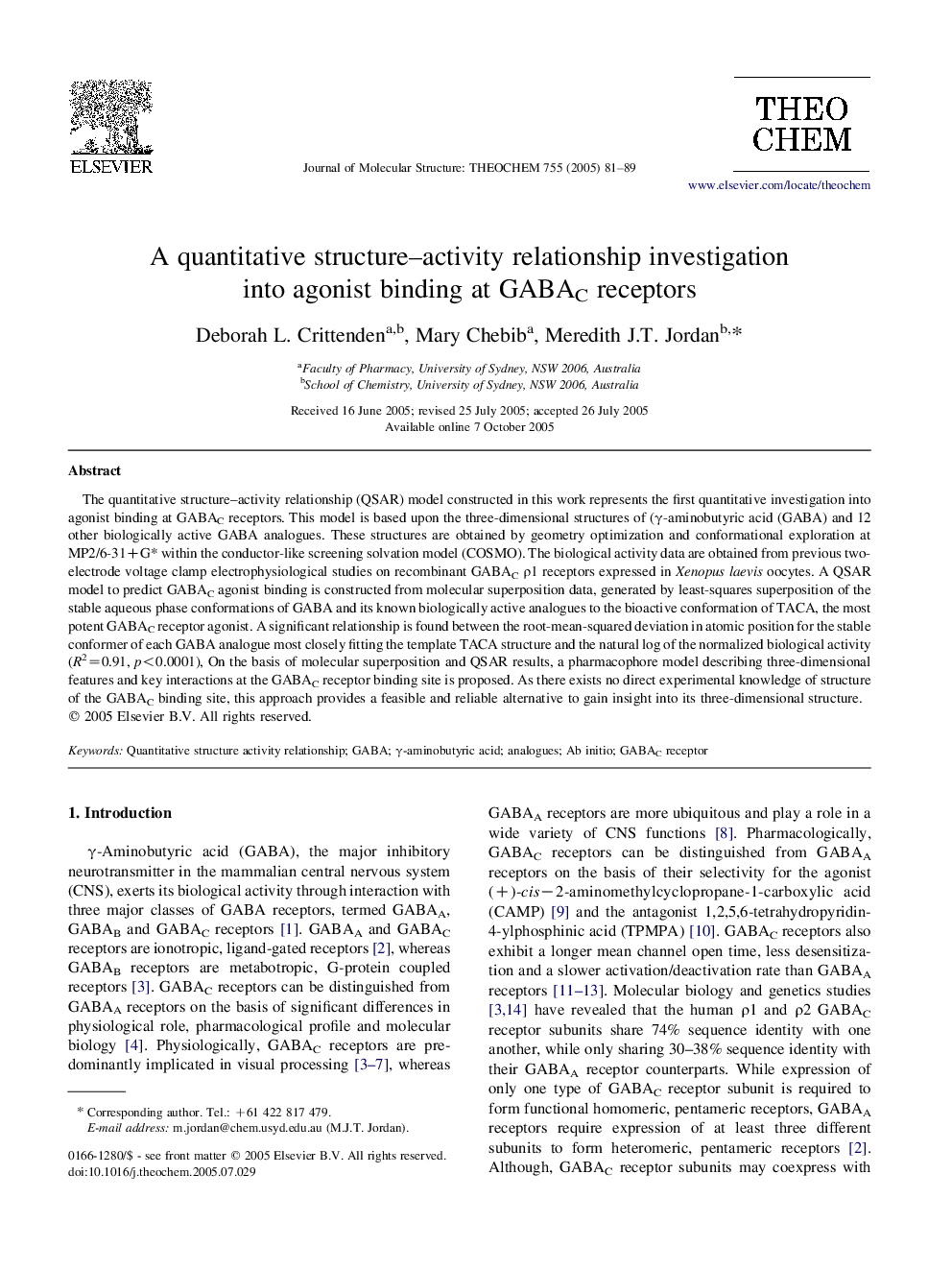| Article ID | Journal | Published Year | Pages | File Type |
|---|---|---|---|---|
| 9590522 | Journal of Molecular Structure: THEOCHEM | 2005 | 9 Pages |
Abstract
The quantitative structure-activity relationship (QSAR) model constructed in this work represents the first quantitative investigation into agonist binding at GABAC receptors. This model is based upon the three-dimensional structures of (γ-aminobutyric acid (GABA) and 12 other biologically active GABA analogues. These structures are obtained by geometry optimization and conformational exploration at MP2/6-31+G* within the conductor-like screening solvation model (COSMO). The biological activity data are obtained from previous two-electrode voltage clamp electrophysiological studies on recombinant GABAC Ï1 receptors expressed in Xenopus laevis oocytes. A QSAR model to predict GABAC agonist binding is constructed from molecular superposition data, generated by least-squares superposition of the stable aqueous phase conformations of GABA and its known biologically active analogues to the bioactive conformation of TACA, the most potent GABAC receptor agonist. A significant relationship is found between the root-mean-squared deviation in atomic position for the stable conformer of each GABA analogue most closely fitting the template TACA structure and the natural log of the normalized biological activity (R2=0.91, p<0.0001), On the basis of molecular superposition and QSAR results, a pharmacophore model describing three-dimensional features and key interactions at the GABAC receptor binding site is proposed. As there exists no direct experimental knowledge of structure of the GABAC binding site, this approach provides a feasible and reliable alternative to gain insight into its three-dimensional structure.
Keywords
Related Topics
Physical Sciences and Engineering
Chemistry
Physical and Theoretical Chemistry
Authors
Deborah L. Crittenden, Mary Chebib, Meredith J.T. Jordan,
